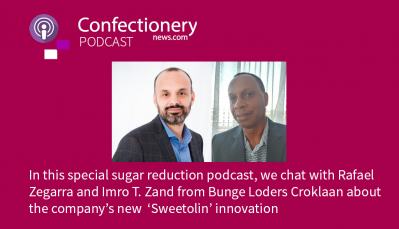Sugar reduction
How low can you go? The evolution of sugar reduction

In an insights report published in the United States by Cargill on the evolution of sugar reduction, it finds consumers are tempering their love for sugary foods in response to global recommendations to limit calories from added sugars.
An International Food Information Council (IFIC) 2019 Food and Health Survey, found that 80% of respondents said they were trying to limit or avoid sugars in general.
All the evidence suggest consumers are more focused on their overall wellbeing than they have been in the past, which has sparked a focus on healthier lifestyles and 'clean' eating. In the United States, new federal regulations require added sugars to be included on the Nutrition Facts Labels.
Sugar reduction is also a growing global issue and is leading to regulatory guidelines in countries such as the UK, Mexico, Spain, Germany and China, along with the USA.
Beverages
But, as taxes on sugary beverages become increasingly popular around the world, the Cargill report says experts are mixed as to whether sugar taxes are a good idea.
“One reason is that the link between sugary beverages and obesity is not conclusive, as many other factors may play a role in causing a person to gain weight. Detractors also debunk the taxes as being imposed in order to provide a revenue source, rather than a legitimate effort to reduce sugar consumption. Nevertheless, while research continues to examine the impacts of sugar intake on long-term health, it is likely these taxes will continue to gain ground,” it states.
What about candy?
As the debate about sugar takes center stage, companies are scrambling to reformulate existing products and/or introduce new low-sugar or no-sugar-added options.
Manufactures have relied on sugar for a variety of functions, from taste and texture to mouthfeel and viscosity, which makes it a wonder ingredient to some extent.
In its report Cargill found that when it comes to sugar reduction in products, certain food categories seem to be more important than others. It says consumers are less worried about sugar content in indulgent products like candy, but categories such as soft drinks and foods for children are on the front lines of sugar scrutiny.
In the US, the FDA has updated the Nutrition Facts label for packaged foods to help consumers make healthy, more informed decisions when buying products. The new label increases the focus on serving sizes, calorie counts and includes a new line for added sugars, which will affect the snacking category most in confectionery.
Brands
Cargill says in its report experts now advise that brands should approach sugar reduction with many factors in mind, such as a deep understanding of what their consumers are looking for in their particular product.
“Once a brand decides to provide a low or no-sugar option, the manufacturer should work to meet taste expectations while using ingredients that offer a simple, label-friendly appeal. It is best to be as clear and transparent as possible about your sugar reduction efforts (what ingredients you are using and why), so that consumers will understand the reasoning behind the ingredient changes. Ultimately, they will likely thank you for it with ongoing trust and repeat purchases.”








